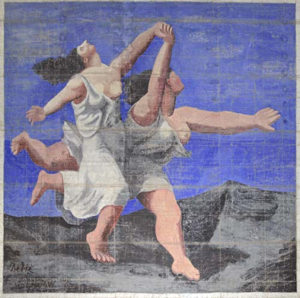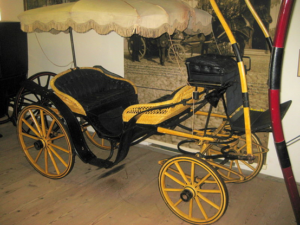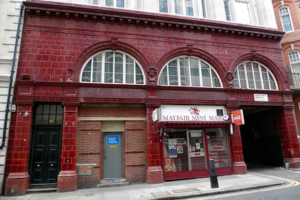
Poirot Score: 77
The Mystery of the Blue Train
☆☆☆☆
Reasons for the Poirot Score
A very good story with vivid characters, witty dialogue, humour and romance. Some good clues that have to be combined in order to form a significant clue. An interesting modus operandi of the crime. Fails to reach the top levels because other solutions are plausible and there is little sense of key points falling into place when the correct solution is seen.
Click here for full review (spoilers ahead)
Trivia
Dedication
To the two distinguished members of the O.F.D. – Carlotta and Peter.
Carlotta is Charlotte Fisher, who was Christie’s secretary and governess to her daughter Rosalind. Peter is Christie’s pet terrier. O.F.D. stands for the Order of Faithful Dogs – Christie’s name for the friends whom she felt stood by her in 1926 when her mother died and her marriage was breaking up. The ‘friends’ whom Christie thought had shunned her were placed in the Order of Rats.
Russian ballet (Ballets Russes); Le Train Bleu
In chapter 31 Poirot dines with a theatre agent called Mr Aarons who says: ‘Never know what the public will jump for next.’
‘Dancing has come very much to the fore in the last few years,’ murmured Poirot reflectively.
‘I never saw anything in this Russian ballet, but people like it. Too high brow for me.’
In June 1924 the Russian ballet impressario, Diaghilev, presented a new one-act ballet in Paris. The ballet was called Le Train Bleu and was inspired by the train on which Poirot later travelled. The music is by Darius Milhaud, the libretto (story line) by Jean Cocteau. ‘Coco’ Chanel designed the costumes and Picasso designed the stage curtain that would rise at the start of the ballet. It is the largest of his works that Picasso signed. The story takes place after the characters have presumably travelled to a seaside resort by Le Train Bleu.
[http://www.ballet.co.uk/magazines/yr_10/oct10/jp_diaghilev_and_ballets_russes_2010.htm]
Picasso’s stage curtain for the ballet Le Train Bleu
Vis-à-vis
We first meet Poirot in chapter 10 when he sits opposite Katherine Grey in the dining car of the Blue Train.
Her (Katherine’s) vis-à-vis tonight was … a small man, distinctly foreign in appearance, with a rigidly waxed moustache and an egg-shaped head.
In modern British and American English vis-à-vis is used almost exclusively as a preposition meaning in relation to. It is derived from ‘face-to-face’. It can also be used as a noun meaning, as here, a person who is opposite or face-to-face. In the eighteenth century it was also used to refer to a particular type of two-seater carriage in which the passengers sat opposite each other face-to-face.
[http://en.wikipedia.org/wiki/File:2009-09-23_Vis_a_Vis_Kutschenmuseum.jpg]
A vis-à-vis carriage
Mannequin
After coming into money Katherine Grey buys some outfits from an expensive London dressmaker (chapter 8). She was received by ‘A slim, elderly Frenchwoman, rather like a dreaming duchess’ who ‘screamed out directions to various mannequins’.
Although current usage of mannequin almost exclusively means a doll used for displaying clothes (or a doll in human form to help artists and surgeons) in earlier British usage, as here, it was used to refer to a dressmaker’s live model used for exhibiting new fashions.
Down Street (underground) station in London
Van Aldin takes the tube (London underground train) to Down Street station. You won’t find any such station on a modern map. It did exist, on the Piccadilly Line, between (what is now) Green Park (but was Dover Street in the 1920s) and Hyde Park Corner. If you watch out carefully you can see the ghost platform when travelling between these stations. If you walk along Down Street itself you can still see the façade of the old station.
[http://london-underground.blogspot.co.uk/2011_03_01_london-underground_archive.html]
The unmistakable façade of an underground station in Down Street in London’s Mayfair. But it only existed as a station between 1907 and 1932.
St Mary Mead
Katherine Grey lives in St Mary Mead, in the county of Kent. ‘Things don’t happen in St Mary Mead’ she says (chapter 7). Christie fans will know that Miss Marple lives in St Mary Mead but it is not the same village. Miss Marple’s village is not in Kent (see The Murder at the Vicarage Trivia).




